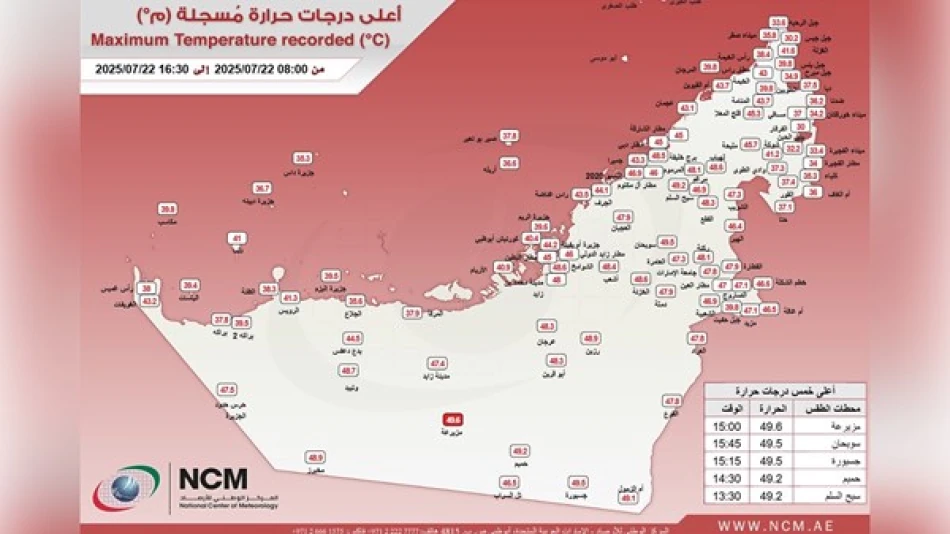
UAE Meteorology Authority Reveals Record-Breaking Temperature
UAE Records Scorching 49.6°C as Desert Nation Faces Intensifying Summer Heat
The United Arab Emirates registered a blistering temperature of 49.6°C (121.3°F) on Tuesday, marking another extreme heat milestone for the Gulf nation as it navigates increasingly severe summer conditions. The record was set in Mezaira, located in the Al Dhafra region, at 3:00 PM local time, highlighting the ongoing challenges facing desert economies amid global climate trends.
Desert Heat Reaches Critical Thresholds
The National Center of Meteorology's announcement underscores the extreme conditions that have become routine across the Arabian Peninsula during summer months. Mezaira, situated in Abu Dhabi's western desert region of Al Dhafra, represents one of the UAE's most arid and exposed areas, making it a frequent hotspot for temperature extremes.
At nearly 50°C, Tuesday's reading approaches the threshold where prolonged outdoor activity becomes dangerous for human health, even for populations accustomed to desert climates. Such temperatures place enormous strain on infrastructure, energy grids, and water resources.
Economic Implications for Gulf States
Energy Demand Surge
Extreme heat events translate directly into massive electricity consumption spikes as air conditioning systems work overtime. For the UAE, which has invested heavily in renewable energy projects like the Mohammed bin Rashid Al Maktoum Solar Park, these temperature peaks test the resilience of diversified energy portfolios.
The timing at 3:00 PM coincides with peak solar generation hours, potentially offering some relief to grid operators who can leverage maximum renewable output during periods of highest demand.
Tourism and Outdoor Industries
Such extreme readings reinforce the UAE's seasonal tourism patterns, where international visitors largely avoid summer months in favor of the October-to-April period. This seasonality impacts everything from hotel occupancy rates to construction schedules, as outdoor work becomes increasingly limited to early morning and evening hours.
Regional Climate Patterns
The UAE's temperature reading aligns with broader regional trends across the Gulf Cooperation Council states. Saudi Arabia, Kuwait, and Qatar regularly experience similar extremes, with some locations in Iran and Iraq having recorded temperatures exceeding 50°C in recent years.
Unlike more temperate climates where heat waves represent unusual events, these temperatures reflect the intensification of normal seasonal patterns in one of the world's most arid regions. The consistency of such readings suggests structural adaptation rather than emergency response has become the primary strategy.
Infrastructure Resilience
The UAE's ability to function normally during such extreme conditions demonstrates decades of climate-adapted development. From underground pedestrian networks in Dubai to advanced cooling systems in Abu Dhabi, the Emirates have built infrastructure assuming regular exposure to temperatures approaching 50°C.
This preparation contrasts sharply with temperate regions where similar temperatures would likely trigger widespread service disruptions and health emergencies. The UAE's experience offers valuable lessons for other nations facing increasing heat extremes due to changing climate patterns.
As global temperatures continue rising, the UAE's approach to extreme heat management—combining energy diversification, adaptive infrastructure, and seasonal economic planning—may become increasingly relevant for regions previously unaccustomed to such conditions.
Most Viewed News

 Layla Al Mansoori
Layla Al Mansoori






